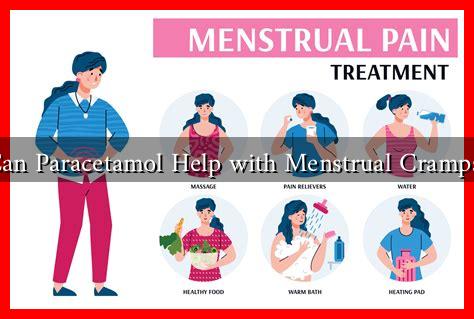-
Table of Contents
Can Paracetamol Help with Menstrual Cramps?
Menstrual cramps, medically known as dysmenorrhea, are a common experience for many women during their menstrual cycle. These cramps can range from mild discomfort to severe pain, significantly impacting daily activities. As a result, many seek effective pain relief options. One of the most commonly used over-the-counter medications for this purpose is paracetamol (also known as acetaminophen). This article explores the efficacy of paracetamol in alleviating menstrual cramps, supported by research and expert opinions.
Understanding Menstrual Cramps
Menstrual cramps occur due to the contraction of the uterus as it sheds its lining. The severity of cramps can vary based on several factors, including hormonal levels, lifestyle, and individual pain tolerance. According to the American College of Obstetricians and Gynecologists, approximately 50% to 90% of women experience menstrual cramps at some point in their lives.
How Paracetamol Works
Paracetamol is a widely used analgesic and antipyretic medication. It works by inhibiting the production of prostaglandins, chemicals in the body that promote inflammation and pain. By reducing the levels of these chemicals, paracetamol can help alleviate pain associated with menstrual cramps.
Research on Paracetamol and Menstrual Cramps
Several studies have investigated the effectiveness of paracetamol in treating menstrual cramps. A systematic review published in the journal BMJ Evidence-Based Medicine found that paracetamol can be effective in reducing pain intensity during menstruation. However, its efficacy may not be as pronounced as that of nonsteroidal anti-inflammatory drugs (NSAIDs) like ibuprofen or naproxen.
- A study conducted by the University of Medicine and Dentistry of New Jersey found that women who took paracetamol reported a significant reduction in pain compared to those who received a placebo.
- Another research published in the Journal of Obstetrics and Gynaecology indicated that while paracetamol is effective, it may take longer to relieve pain compared to NSAIDs.
Comparing Paracetamol with Other Pain Relief Options
While paracetamol can be effective, it is essential to compare it with other pain relief options available for menstrual cramps:
- NSAIDs: Medications like ibuprofen and naproxen are often recommended as first-line treatments for menstrual cramps due to their anti-inflammatory properties. They not only relieve pain but also reduce inflammation.
- Hormonal Birth Control: Hormonal contraceptives can help regulate or even eliminate menstrual cramps by suppressing ovulation and reducing the thickness of the uterine lining.
- Alternative Therapies: Some women find relief through acupuncture, yoga, or dietary changes, which can help manage pain without medication.
When to Use Paracetamol for Menstrual Cramps
Paracetamol can be a suitable option for women who experience mild to moderate menstrual cramps and prefer a non-NSAID pain relief method. It is particularly beneficial for those who may have contraindications to NSAIDs, such as gastrointestinal issues or certain cardiovascular conditions.
Potential Side Effects and Considerations
While paracetamol is generally considered safe when used as directed, it is crucial to be aware of potential side effects and risks:
- Liver Damage: Overuse or high doses of paracetamol can lead to liver damage, especially in individuals who consume alcohol regularly.
- Allergic Reactions: Some individuals may experience allergic reactions, including skin rashes or difficulty breathing.
It is always advisable to consult with a healthcare professional before starting any new medication, especially for those with pre-existing health conditions.
Conclusion
In summary, paracetamol can be an effective option for managing menstrual cramps, particularly for those who prefer a non-NSAID approach. While research supports its use, it may not be as effective as NSAIDs for some women. Understanding the various pain relief options available, including hormonal treatments and alternative therapies, can empower women to make informed choices about their menstrual health. Always consult a healthcare provider for personalized advice and treatment options.
For more information on menstrual health and pain management, consider visiting the American College of Obstetricians and Gynecologists.




